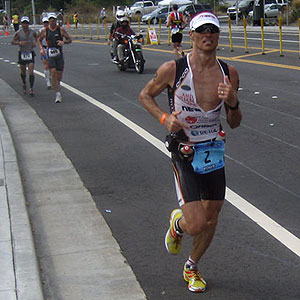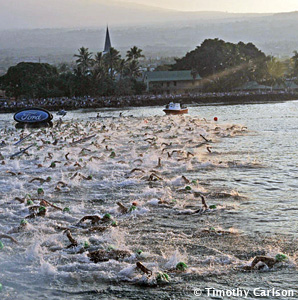Wellington on WTC changes
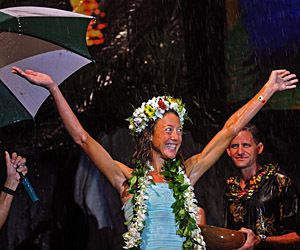
Editor's note: Below is Chrissie Wellington's official response to Ironman's (World Triathlon Corporation's) proposed overhaul of its qualification, field size, and prize money. It was circulated to several respondents, including media, including Slowtwitch. We publish it here unabridged and unedited. Chrissie is the winner of the last three Hawaiian Ironman World Championships. Among women, she holds both Kona's course record, and the world record for the Ironman distance.
Professional World Championship Qualifying,
Prize Money & Policies
Excellent that the WTC has circulated this for comment, and is willing to take on board the views of the athletes. This is a step forward and is to be commended.
Agree with the stated goals of the policies, but concerned that the system – as proposed in the email circulated – may not actually achieve the goals specified.
Specific comments on Kona Qualification process/ranking system
Agree that the field size at Kona needs to be reduced, and the strength/depth of field is commensurate with it being a World Championship. However clarification is needed about how the 50 and 30 field size was calculated, and how and why this ratio may alter over time. If it is based on the numbers of WTC pro members then the fact that many of these pro members might not even race an IM, and may be 70.3 athletes, needs to be taken into account.
1 September is too late for athletes to know whether or not they have a Kona slot. Athletes need to know months in advance whether they have qualified for Kona so as to dedicate the time to training and preparation warranted for participation in a World Championship. Contrary to the stated objective, this policy could actually decrease the quality of performances at Kona as athletes simply do not have the time to prepare effectively.
In addition, the timing will make it difficult for the athletes and their families, sponsors and supporters to book travel and accommodation. (age group athletes will still be able to book accommodation earlier, reducing availability for the pros). If the pro field is being reduced to 80 – and has been around 150 in previous years – will the overall field (eg age group plus pro) size remain the same, and hence the number of age group slots actually increase? This will further serve to exert pressure on limited accommodation and flights making it hard for the pros to book if they are only finding out in September whether they are racing.
Crucially, the new structure reduces the flexibility athletes have in making decisions about whether or not to race a WTC event. Athletes are forced, by the need to accrue points, to only do WTC events, at the expense of other race series, such as Rev3 and Challenge. This is regrettable, as the sport requires diversity in races and not a monopoly held by one brand. WTC should be embracing the growth of the sport, and not placing a stranglehold on it by dictating the choices of professional athletes.
The key issue is that the proposed Ironman/Kona points system seems, ironically, a) to be heavily weighted towards 70.3 athletes; and b) does not necessarily reward a good IM performances to the value which one might expect. This is contrary to the stated goals of the policy. The value of a good ironman performance should be higher, by increasing the points awarded for IM races. It is illogical that the value of winning a 70.3 Championship 70.3 race is the same as winning a $75,000 IM (eg both worth 1000pts) or even that winning the 70.3 World Championship is the same as a 14th at Kona. Kona qualification should be based principally on ironman performance and not 70.3 performance. And (as the policy already states) the converse should apply for Clearwater qualification – eg IM points do not count and so qualification will be based on 70.3 results.
We urgently need clarification about which races are being included under each series, and the dates of these races. If the $100,000 IM races are not until June-August, it could reduce the likelihood that athletes will actually race them, given that they would rather earn points (and secure a high ranking) as early as possible. In addition, given that this new framework could force athletes to race earlier in the season it may deter them from taking a proper (essential) physical and mental break after Kona and increase burn out (or worse, the increased used of performance enhancing drugs).
The system could also be skewed by the place of residence of the athlete. Athletes that live in Europe and North America will have more opportunity to race, and gain points, as there are many more races there, than Asia, Australia and South America (athletes from Asia, Australia and South America may also have to invest more to travel to races – and this may deter them from competing). Conversely, though, the race season starts later in Europe/North America and hence will mean that the opportunity to accrue points in these two continents is later than Australia and Asia and hence could put the European/American athlete at a disadvantage as they will not be able to start accruing points until May onwards.
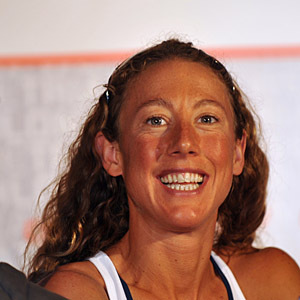
In summary
The field size at Kona should be reduced in line with the numbers suggested and that all those who want to get to Kona should have to do at least one IM to secure their slot. However, given the above limitations the proposed ranking/points framework will need considerable refinement – and it needs to be carefully considered whether the proposed structure is better at achieving the stated objectives than, say, giving automatic qualification to those who win an IM, and then rolling down the additional slots to 2nd/3rd placed finishers (perhaps provided they are within a % of the winners time). If the proposed ranking system is implemented the following improvements could be incorporated/taken into account:
At the very minimum, winners of a Championship ($100,000) ironman race should get immediate qualification for Kona – but ideally all those who win an IM should qualify. At a minimum, a top ten Kona finish should count towards an athlete’s points accrual for the following year.
It may be worthwhile establishing a points level beyond which athletes get automatic qualification. eg – if an athlete reaches a certain amount points by a selected date (eg 1 July) then they automatically qualify for Kona.
The number of 70.3 races that count towards the total should be reduced (perhaps to 2). Kona should be the World Championship for deserving Ironman athletes and Clearwater for 70.3 athletes.
The ranking list should be made public and up to date so that athletes, the media, sponsors, the public etc can see the current ranking. This will enable athletes to take an educated guess about whether they are likely to have a Kona slot; galvanise competitiveness between closely ranked athletes, and also shape what races athletes may chose to do in order to be able to increase their number of points. In addition, it will be important that race start lists are published, so that athletes can determine what races they should enter in order to stand the best chance of accruing the most points (and money).
It is regrettable that the WTC does not seem to value previous Kona Champions through the suggestion that automatic qualification be restricted to 3 years following the last Kona victory. It could be suggested that previous Champions are allowed automatic qualification but that these individuals are additional to the 50/30 field limits. These Champions are the history of the sport, and continue to attract media and sponsor interest. Furthermore many are still racing (ironmans and/or 70.3s) as a WTC pro member and so would not be able to qualify for/or race the World Championships as an age grouper.
Ideally, ironman prize money payment should be for top ten in all races, which will continue to ensure depth at all levels of the series – even if the prize purse for 5th-10th in the $25,000 IM races is only nominal (say $200), at least it will cover transport/accommodation.
Further clarity is needed on the ‘Wild Card’, and the potential ‘holes’ that the WTC refer to. If the wild card is not used for athletes with special circumstances (injury, illness, another external factor), what is it being used for? It is a special friends/Lance Armstrong clause? Can the Wild Card athlete take a slot away from the 30th ranked athlete?
What happens in the event of a ranking tie?
Do athletes HAVE to do five races to qualify – or it is only the top five races that actually count?
The examples given don’t match the points in the table. For example, under Fast Freddy it states that 1st at the 2010 AP 70.3 Championships is worth 1500 but in the table it states that it is worth 1000; and also the Steady Eddy example states that 20th at the 2011 $75,000 IM gets 20points, but in the table it is 25 points.
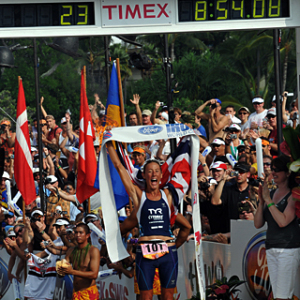
Additional comments
The cost of the one day license still seems incredibly expensive – and prohibitive for many athletes. In addition, clarification is needed regarding the criteria for awarding the license, and whether this then includes membership in the anti doping programme?
It would be useful to see the published list of criteria for determining eligibility for the scholarship membership programme.
Interested to know what steps the WTC will be taking to maximise media interest in the pro races, and thereby achieving the stated goal of increasing media exposure to benefit the pros, as well as their sponsors.
Entry to Kona and Clearwater should be free for all pros (with no increase in cost for age groupers to cover shortfall)
Will the prize purses increase annually? And what is the prize purse for Kona? Will the races have primes to provide additional income opportunities?
Clarification and consistency is needed on prize money payment terms, conditions and timelines.
The top ten placed athletes should all be subject to in-competition anti doping tests at Kona as well as selected random pro and age group athletes. As a minimum, the top 20 ranked male/female athletes from the previous year should be subject to out of competition testing – but if possible all Kona qualifiers should be included in the Registered Testing Pool.
We need a discussion about how to reduce the amount of drafting. One solution would be to send the women off 5minutes behind the male pros and then 20 minutes (at least) in front of the age group athletes.


